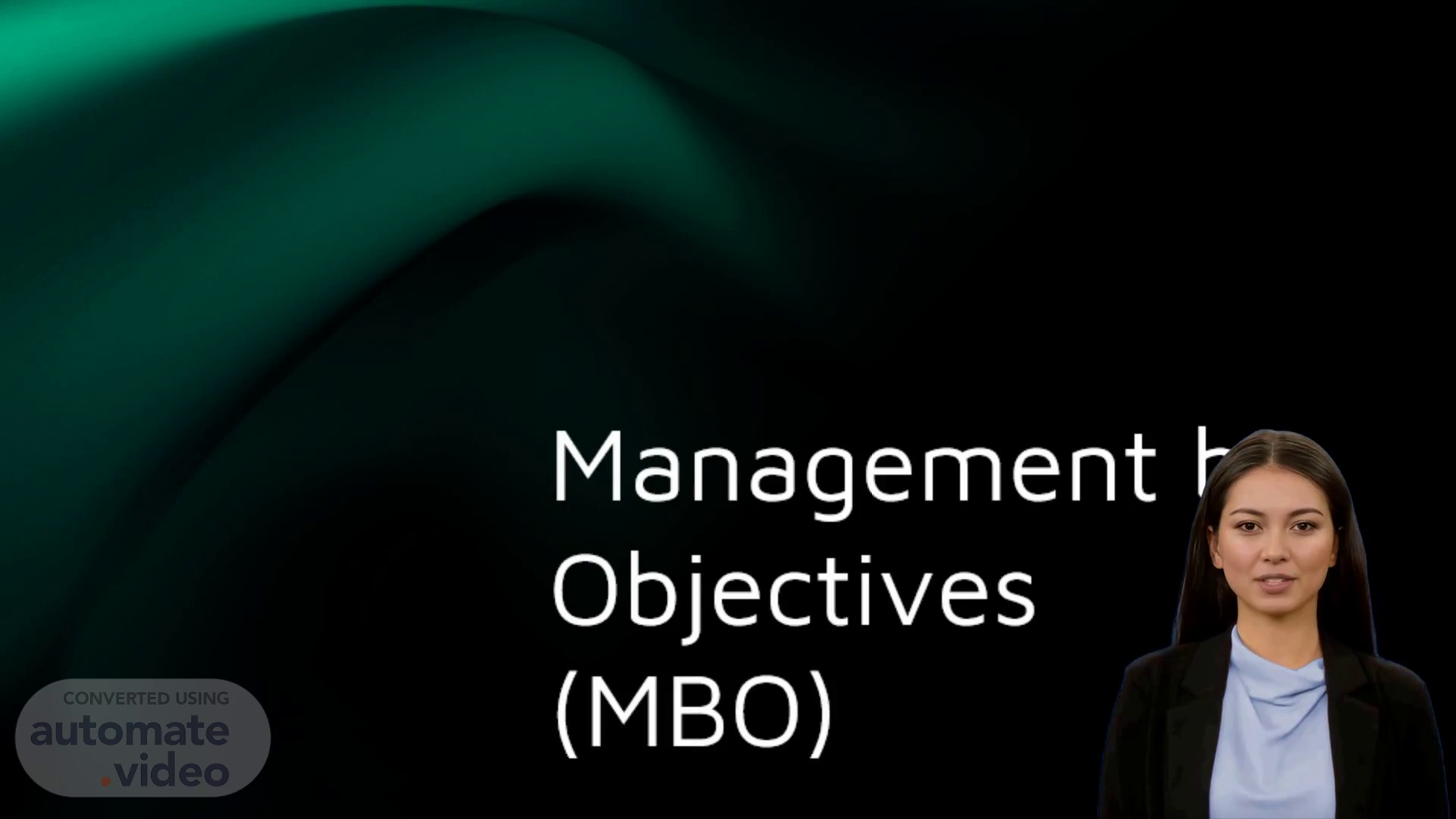Scene 1 (0s)
[Virtual Presenter] Management by Objectives is a powerful tool that enables organizations to achieve their goals through effective goal-setting and alignment. We will now explore its benefits in our presentation..
Scene 2 (12s)
[Audio] Management by Objectives is a strategic management model designed to enhance organizational performance by synchronizing goals between employees and management. This approach promotes effective communication and establishes accountability, thereby providing a more direct route to success..
Scene 3 (30s)
What is MBO?. 01.
Scene 4 (36s)
[Audio] Management by Objectives is a management strategy that highlights the significance of defining specific and measurable goals jointly. This approach promotes employee participation in setting work objectives, resulting in increased dedication and responsibility in achieving the established targets..
Scene 5 (54s)
[Audio] Management and employees collaborate to establish clear, specific, and measurable objectives. This structured method ensures alignment with the organization's overarching goals while empowering employees by granting them ownership of their tasks, thereby driving motivation and productivity..
Scene 6 (1m 13s)
[Audio] By emphasizing measurable goals, we create a framework for tracking progress and determining success. This focus enables both managers and employees to assess the achievement of objectives over time. With measurable goals, we can foster accountability and evaluate performance, leading to increased productivity and motivation within our teams..
Scene 7 (1m 34s)
Process of MBO. 02.
Scene 8 (1m 40s)
[Audio] The first step in the MBO process is setting specific and realistic goals. This is a collaborative effort between managers and employees, ensuring that goals align with company objectives. Clarity and direction are provided to employees, enhancing their commitment to achieving these goals. To achieve this, goals should be SMART: Specific, Measurable, Achievable, Relevant, and Time-bound..
Scene 9 (2m 6s)
[Audio] Evaluating performance is a critical step in the Management by Objectives framework. At regular intervals, we assess our achievements against the goals we set earlier. This evaluation is based on facts and figures, providing a fair and accurate picture of our productivity. We discuss any challenges we've faced and identify areas where we can improve, so we can grow professionally and perform better in the future..
Scene 10 (2m 31s)
[Audio] Feedback plays a crucial component in the MBO process. It should be constructive, timely, and specific, highlighting both achievements and areas where employees can improve. This type of feedback encourages motivation and helps employees adjust their strategies to meet their goals. Furthermore, it fosters an open communication culture and supports ongoing professional development within the organization..
Scene 11 (2m 56s)
[Audio] By aligning individual goals with the organization's objectives, Management by Objectives enhances overall effectiveness. Clear, measurable outcomes and open communication foster a culture of accountability and continuous improvement. Ultimately, this structured approach leads to higher employee engagement and organizational success..
Scene 12 (3m 17s)
[Audio] Management by Objectives is a strategic management model that aims to improve organizational performance by aligning goals among employees and management. This method fosters communication and creates accountability, facilitating a clearer path to success..
